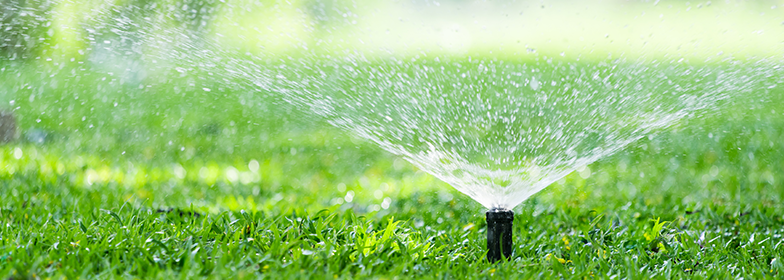
How to winterize a sprinkler system and your home’s water pipes
Learning how to winterize a sprinkler system and your home’s water pipes is essential if you live in an area where the temperature drops below freezing. Because water expands when it freezes, it increases pressure on your pipes. If the freezing temperatures last too long, they can cause pipes to burst, no matter how strong they are. In addition to broken pipes, a sudden freeze may damage sprinkler heads, valves, drywall, joints, landscaping or your home’s foundation if water begins to pool.
Water damage and freezing pipes account for 19% of property damage claims. Avoid costly problems with these helpful tips to winterize your sprinkler system and water pipes.
3 key steps to winterize your sprinkler system
Automatic sprinkler systems help conserve water from runoff and evaporation that occurs when you water by hand, saving time and money. However, if your yard is subject to freezing temperatures, you’ll need to take steps to prevent leaks and breakages in pipes and valves.
Like most home maintenance projects, you can call a professional to help winterize your sprinkler system. But if you’re comfortable with the following steps, you may be able to tackle this quick home maintenance project on your own. Before you begin, check your sprinkler system’s manual for specific instructions.
-
1. Shut off the water supply
Turn off the sprinkler water supply at the main valve next to your water meter. “Once you’ve located the shut-off lever, turn this perpendicular and test the water supply to the system. If you accidentally select the main water supply lever, it’ll be pretty apparent because it will cut off your entire home’s water supply,” advises Angi’s List.
-
2. Turn off your timer
If your system is automatic, turn off the timer or put it in rain mode. Then, when the weather warms up, you can turn it back on or shut off rain mode, and your system’s settings should be saved.
-
3. Drain residual water
After you’ve shut off the water supply and turned off your timer, there are three methods to drain the water to winterize your sprinkler system, depending on the type of irrigation system.
- Manual draining
Home Depot describes these main steps if your system uses manual drainage: “Look for the manual valves at the ends and low points of the piping. Open all the valves and drain the water from the system. Make sure you also drain the backflow device.” In addition, you’ll want to remove, drain and store hoses used outdoors.
- Automatic draining
If your sprinkler system can automatically drain, it will begin emptying once your water pressure falls below a certain level. You may also activate automatic draining by running one sprinkler with the water supply turned off to clear excess water from the pipes.
- Blowout draining
The blowout method is the most challenging option and may be hazardous as it forces compressed air through your irrigation system. Consult a professional if you’re uncomfortable with this DIY approach, unaware of the proper safety precautions or unsure if your sprinkler system can handle the pressure.
- Manual draining
Don’t forget to winterize your home’s water pipes, too
Preventative steps to winterize your home’s water pipes can save you from the hassle and expense of burst pipes.
-
1. Add insulation
Insulate pipes with pipe insulation where water supply lines are in unheated areas.
-
2. Maintain airflow
Open cabinet doors on cold days so the heat from your home can keep them warm.
-
3. Let the faucet drip
To relieve the pressure that may build up, This Old House recommends slightly opening the faucet farthest away from the water main.
Homeowners know it’s important to plan home maintenance projects before major damage occurs. In addition, one of the best ways to maximize your home’s value is to stay on top of routine maintenance. If you’re considering selling your home, did you know you can also plan ahead to provide potential homebuyers with a more affordable payment as rates continue to rise?
With LockNow and Sell, sellers have the opportunity to lock in an interest rate for 60 days to protect their investments in uncertain markets. Your buyers can feel sure about their purchase—there’s no need to wait for rates to drop, as their rate will not increase at the time of purchase. Contact us to get your listing sold with LockNow and Sell.
The above information is for educational purposes only. All information, loan programs and interest rates are subject to change without notice. All loans subject to underwriter approval. Terms and conditions apply. Always consult an accountant or tax advisor for full eligibility requirements on tax deduction.
